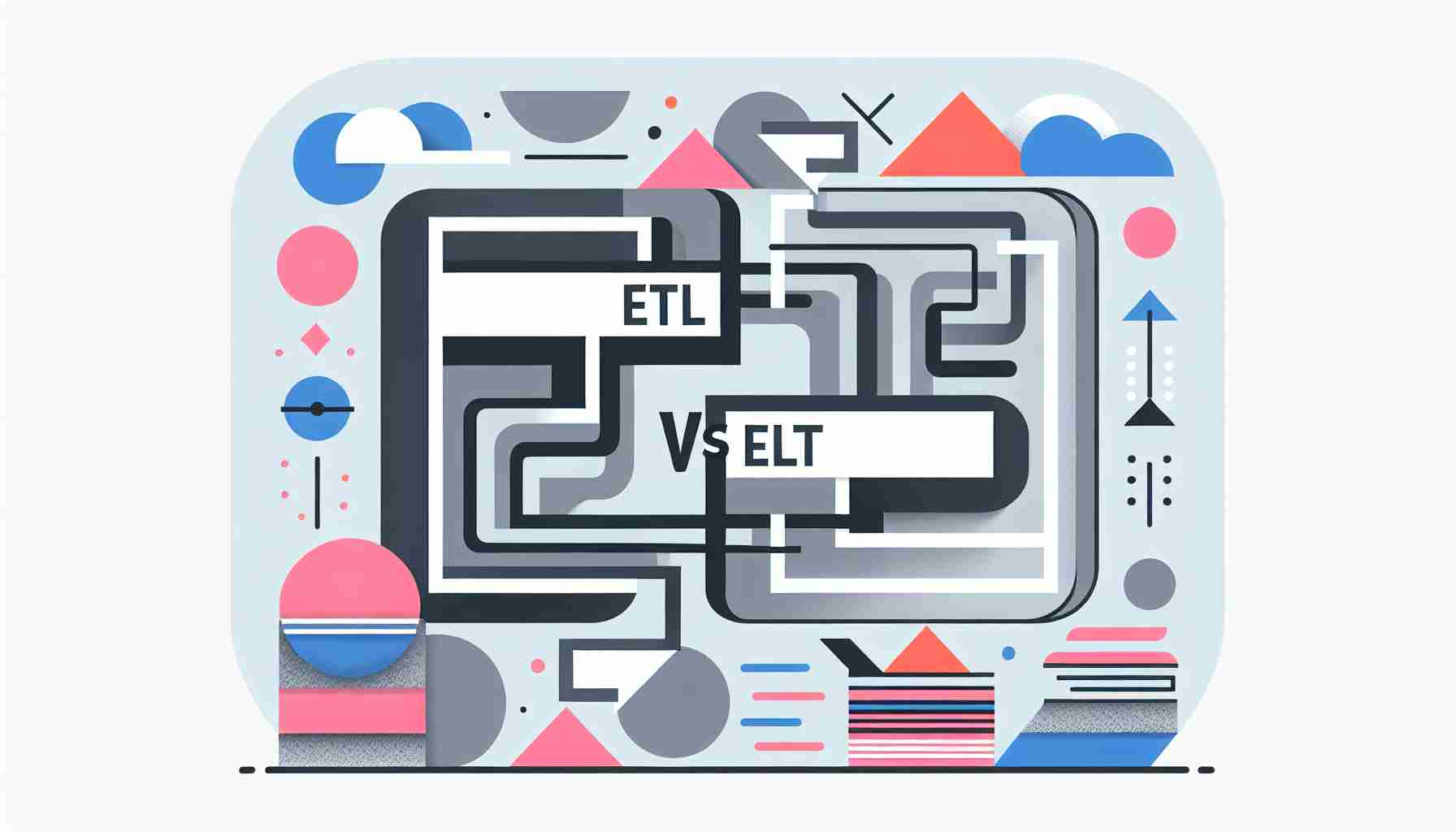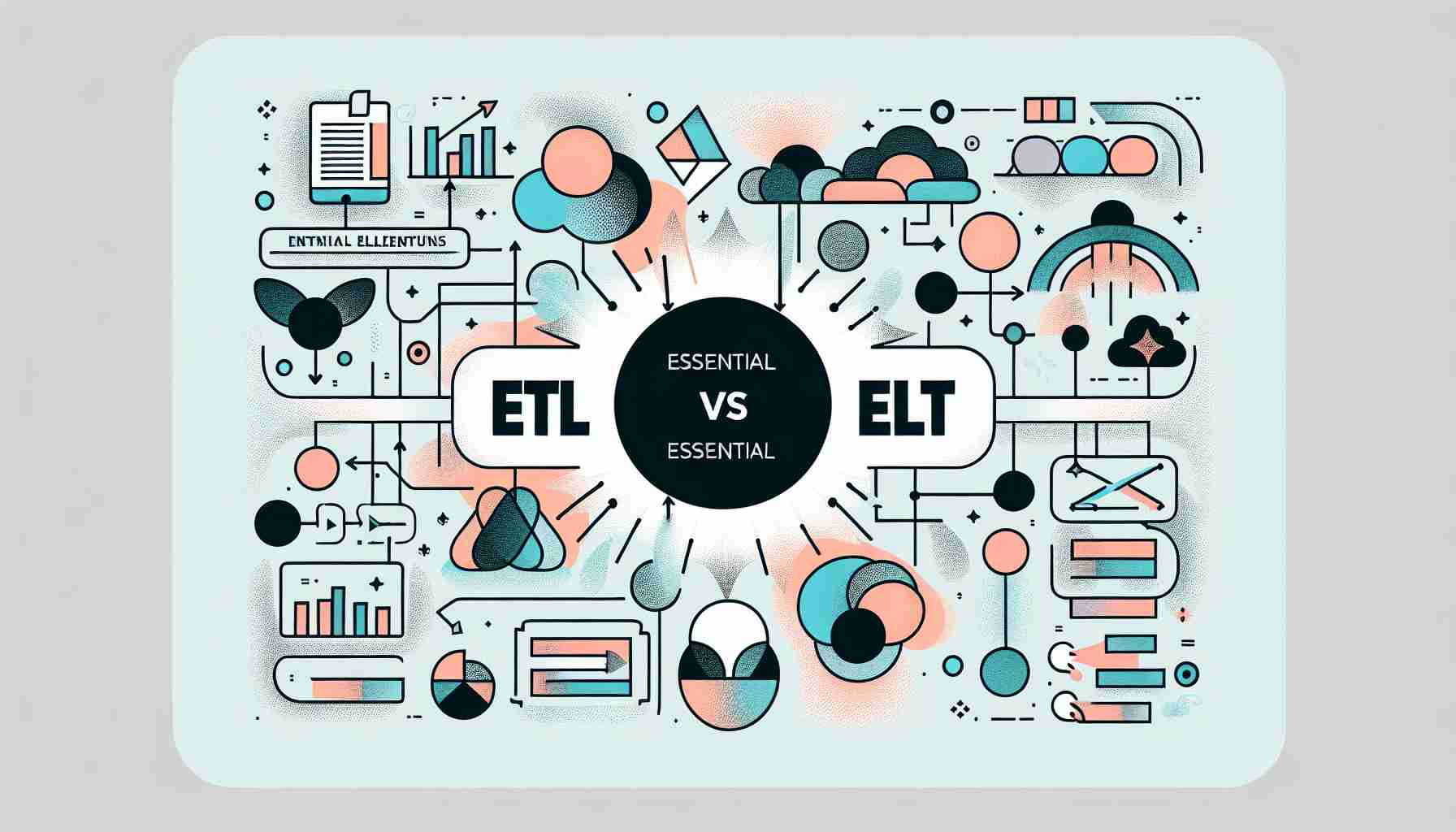ETL vs ELT Understanding the Core Differences in Data Analysis

ETL vs ELT Briefly Summarized
- ETL (Extract, Transform, Load): A traditional data processing framework where data is extracted from various sources, transformed into a structured format, and then loaded into a data warehouse.
- ELT (Extract, Load, Transform): A modern approach where data is extracted, loaded directly into a data storage system, and then transformed as needed within the storage environment.
- Performance: ELT is generally faster than ETL, especially with large data sets, because it leverages the processing power of modern data storage systems.
- Flexibility: ELT offers more flexibility in handling unstructured data and allows for the storage of raw data, which can be transformed multiple times for different use cases.
- Data Quality: ETL is traditionally seen as better for data quality because transformations are handled before loading, allowing for thorough testing and validation.
In the realm of data analysis, the methodologies used to prepare and manage data are critical to the insights and value that can be extracted from it. Two key processes that stand at the forefront of data preparation are ETL and ELT. These acronyms represent the sequential steps taken to move data from its original location to a data warehouse or lake where it can be analyzed and utilized for business decisions. Understanding the differences between ETL and ELT is essential for data professionals to choose the right approach for their data strategy.
Introduction to ETL and ELT
Extract, Transform, Load (ETL) is a process that has been the backbone of data warehousing for decades. It involves three main stages:
- Extracting data from the original sources.
- Transforming the data into a format suitable for analysis and querying.
- Loading the transformed data into a data warehouse or another repository.
ETL processes are typically managed by specialized software that automates these steps, ensuring data consistency and conformity to business rules and data models.
On the other hand, Extract, Load, Transform (ELT) is a newer approach that has gained popularity with the advent of powerful cloud-based data storage solutions. ELT follows a slightly different order:
- Extracting data from source systems.
- Loading the raw data directly into the target data storage system.
- Transforming the data as needed within the data storage environment.
This approach leverages the processing capabilities of modern data warehouses, which can handle large volumes of data and complex transformations.
The ETL Process
ETL involves a detailed and often complex process of data cleansing, validation, and formatting. The transformation step is crucial as it ensures that the data conforms to the required standards and structures before it is loaded into the data warehouse. This pre-loading transformation can include tasks such as:
- Data cleansing to remove inaccuracies or inconsistencies.
- Data enrichment by adding additional relevant information.
- Data deduplication to eliminate duplicate records.
- Data validation to ensure compliance with business rules and data integrity.
The ELT Process
ELT, in contrast, simplifies the initial stages by loading data directly into the target system without prior transformation. The raw data is then transformed within the data storage environment, utilizing the powerful processing capabilities of modern data warehouses like Amazon Redshift, Google BigQuery, or Snowflake. This approach allows for:
- Greater flexibility in managing and transforming data.
- The ability to handle large volumes of data quickly.
- The storage of raw data, which can be beneficial for compliance and historical analysis.
Comparing ETL and ELT
When comparing ETL and ELT, several factors come into play:
- Performance: ELT can process data more quickly due to the reduced need for data movement and the use of powerful data warehouse processing capabilities.
- Scalability: ELT scales better with large data volumes since it does not require the data to be transformed before being loaded into the data warehouse.
- Flexibility: ELT allows for more agile data manipulation, as raw data can be transformed in multiple ways to suit different analytical needs.
- Data Quality: ETL has a strong focus on data quality, as transformations are applied before loading, allowing for thorough testing and validation.
Choosing Between ETL and ELT
The choice between ETL and ELT depends on various factors, including:
- The volume and complexity of data.
- The structure of the data (structured vs. unstructured).
- The processing capabilities of the data warehouse.
- The specific business requirements for data analysis and reporting.
Conclusion

Both ETL and ELT play crucial roles in the data analysis landscape. ETL is a time-tested process that offers robust data quality and consistency, making it suitable for scenarios where data integrity is paramount. ELT, on the other hand, provides speed and flexibility, especially for large data sets and unstructured data. As data environments continue to evolve, the choice between ETL and ELT will depend on the specific needs and capabilities of the organization.
FAQs on ETL vs ELT
-
What is the main difference between ETL and ELT?
- The main difference lies in the order and location of the data transformation step. ETL transforms data before loading, while ELT loads data first and then transforms it within the data warehouse.
-
Which is faster, ETL or ELT?
- ELT is generally faster, particularly with large data sets, because it leverages the processing power of the data warehouse and reduces the time spent on data movement.
-
Can ETL handle unstructured data?
- ETL can handle unstructured data, but it may require more complex transformations before loading, making ELT a more flexible option for such data types.
-
Is ELT more cost-effective than ETL?
- ELT can be more cost-effective, especially when dealing with cloud-based data warehouses that offer scalable processing power, reducing the need for extensive on-premise hardware and maintenance.
-
How do ETL and ELT impact data quality?
- ETL is traditionally associated with higher data quality due to the pre-loading transformations and validations. However, ELT also offers data quality checks, albeit after the data is loaded into the warehouse.
Sources
- Extract, transform, load
- ELT vs ETL : r/dataengineering - Reddit
- ETL vs ELT - Difference Between Data-Processing Approaches - AWS
- ETL vs ELT: 5 Critical Differences - Integrate.io
- ETL vs ELT: Differences and Similarities | Snowflake
- ETL vs ELT - Qlik
- Which is better, ETL or ELT? - data warehouse - Stack Overflow
- ETL vs. ELT: What's the Difference & Which Is Better? - HubSpot Blog
- ELT vs. ETL: What's the Difference? - IBM Blog
- ETL vs ELT: Which data integration process is ideal? - Atlan